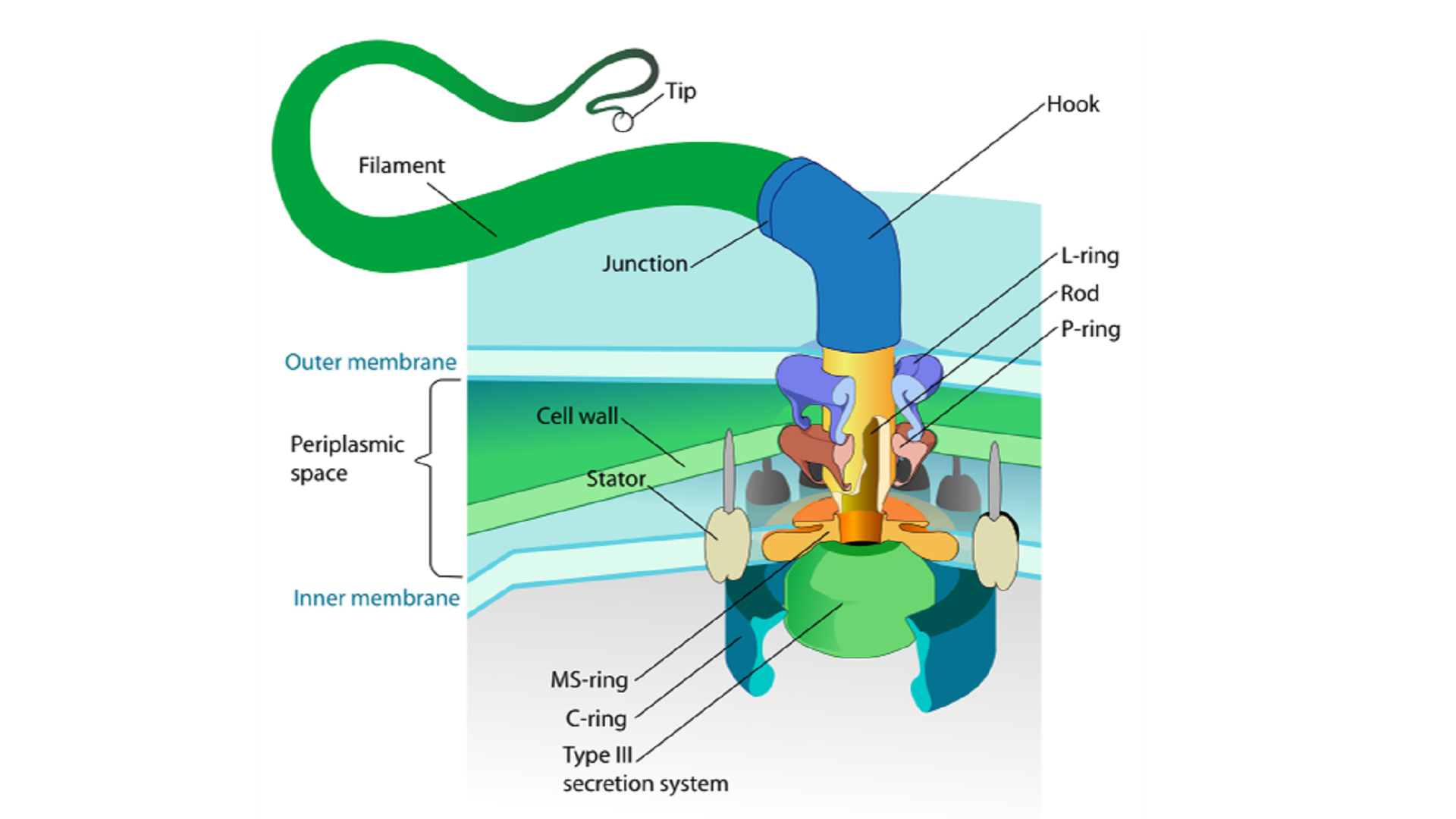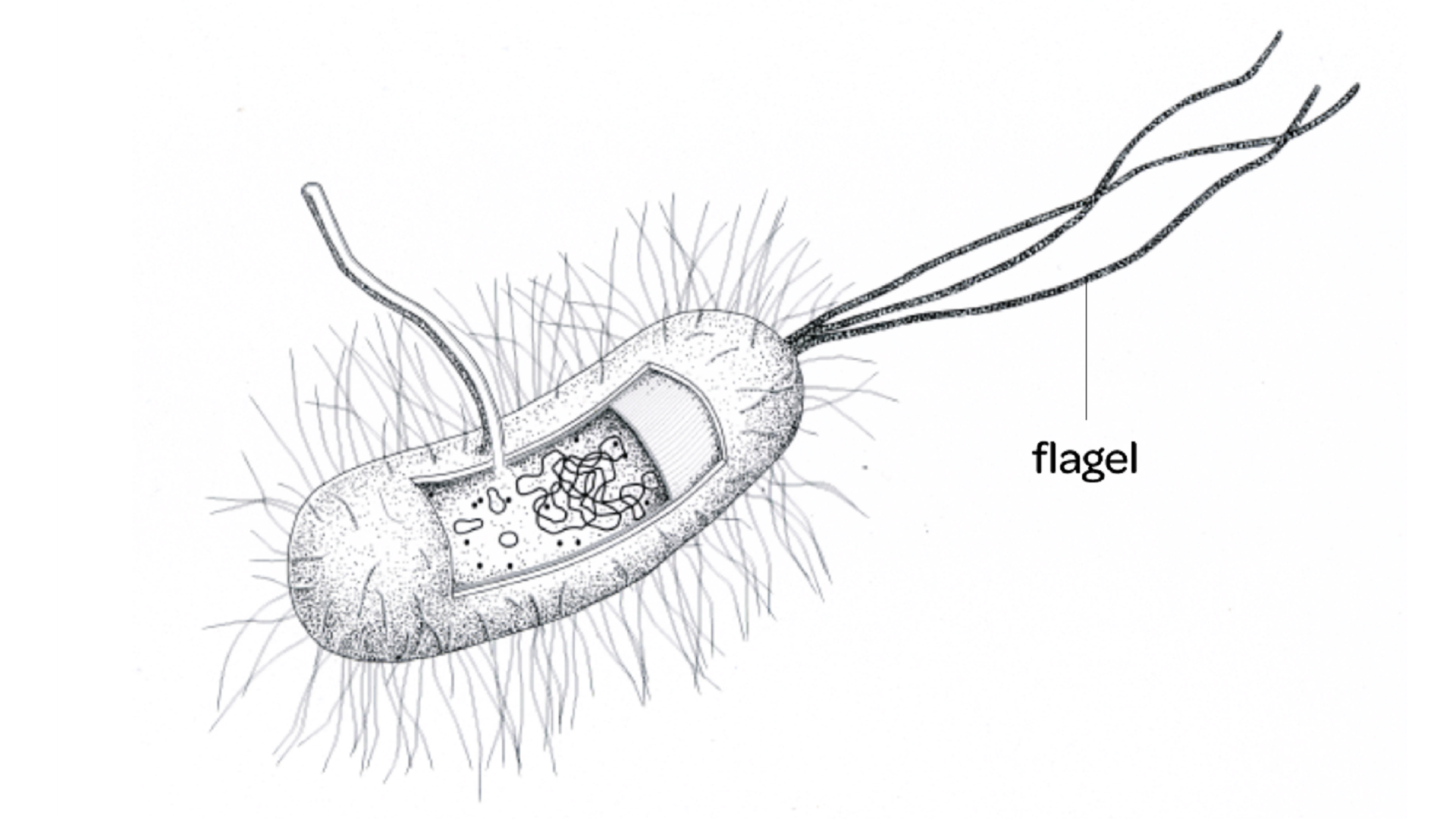Many bacteria, but also eukaryotic cells and archaea, have a flagellum. By means of a complex rotary motor, the flagellum "screws" up to 1,200 rpm, and the bacterium reaches incredible speeds.
Many bacteria, but also eukaryotic cells and archaea, have a flagellum. By means of a complex rotary motor, the flagellum "screws" up to 1,200 rpm, and the bacterium reaches incredible speeds.
Hairy appendage
A flagellum is a lash-like appendage that protrudes from the cells of certain bacteria and eukaryotic cells (such as sperm cells). The word flagellum is Latin for "whip". Organisms can have one or more flagella. Most organisms use their flagellum to move, but it also often acts as a sensory organelle. The flagellum can be sensitive to substances and temperatures outside the cell. Flagella differ greatly in structure, protein composition and propulsion mechanism. Globally there are three types of flagella: bacterial flagella, that of archaea (called an archaellum) and eukaryotic flagella.
60 cell lengths per second
The bacterial flagellum consists of a long, hollow tube that is attached to the flagellum motor in the bacterium in an angle. The rotating movement of the motor, in combination with the angle in which the flagellum is attached, ensures a screwing movement of the flagellum. This very complex, rotating motor (Mot complex) is driven by a flow of protons. The rotor is extremely fast and energy efficient. Without a flagellum attached, it can run at 6,000 to 17,000 revolutions per minute, although with the flagellum it is usually only 200 to 1,000 rpm. The direction of rotation can be changed almost immediately which makes the bacteria very agile. Moreover, with the help of their flagella, bacteria can reach remarkable speeds in relation to their size. Sometimes up to 60 cell lengths per second. In comparison, a cheetah achieves "only" 25 body lengths per second.

The extremely efficient Mot-complex can turn the flagellum up to 1,000 times a minute.

